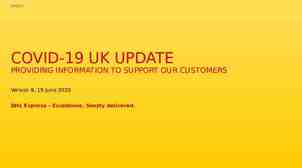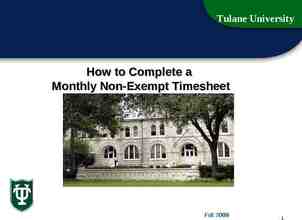Geographic Routing of Toll Free Services Future of Numbering Working
6 Slides61.07 KB
Geographic Routing of Toll Free Services Future of Numbering Working Group Presented by: David Greenhaus, 800 Response Information Services 1
Introduction Routing calls based on the caller’s location is an important aspect of many toll free services, whether a call originates from a wireline, wireless, or VOIP caller. Today, the on-going erosion in the geographic underpinnings of the North American Numbering Plan is gaining increased visibility and attention in the telecommunications industry. Taken together, the de facto nomadic nature of mobile telephone service, the proliferation of mobile devices, and their impact on determining an originating caller’s location have compromised the toll free carriers’ ability to route and bill mobile and nomadic VOIP originated calls on the basis of the TN. This white paper provides an overview of toll free location-based routing, identifies specific roadblocks to accurately routing those calls in the current environment, and offers up suggestions for overcoming those limitations within the context of current rules and regulations. 2
CPNI Rules In its Declaratory Ruling released June 27, 2013, Implementation of the Telecommunications Act of 1996: Telecommunications Carriers’ Use of Customer Proprietary Network Information and Other Customer Information, the Commission: Par. 8: did not adopt any new rules Par. 33: “We also reiterate that section 222(c) (1) [of 47 USC] allows a telecommunications carrier to use, disclose, or permit access to this CPNI ‘in its provision of (A) the telecommunication service from which such information is derived, or (B) services necessary to, or used in, the provision of such telecommunications service.” Note that Section 222 (b) of Title 47 states: “A telecommunications carrier that receives or obtains proprietary information from another carrier for the purpose of providing any telecommunications service shall use such information only for such purpose, and shall not use such information for its own marketing efforts.” The combination of these two provisions (in the statute) indicates that Congress contemplated the transfer of CPNI in the provision of telecommunications services, and specifically permitted it. Moreover, Section 222(b) clearly imposes upon carriers an obligation to use such information only “for such purpose.” 3
“Fuzzy Location” For the most part, toll free calls that are routed based on the originating callers’ location currently utilize the caller’s telephone number, which corresponds with a “fuzzy” location (usually within miles of the caller’s location). While “fuzzy” location data should be available to indicate the location to which the call is to be routed, that is different from transmitting “actual current location.” In determining the degree to which notice and consent requirements are warranted, consideration should be given to the granularity of location information passed through to the Toll Free Subscriber. 4
Opt-in / Opt-Out As a rule, callers want their calls to complete quickly, and do not want to deal with time-consuming, interactive voice response systems, which are frequently viewed as annoyances; this is especially true when callers do not expect to encounter an automated interaction. In addition, the longer a caller is on a call, the greater the likelihood that the call will be disconnected. Thus, the imposition of opt-in or opt-out requirements would be detrimental to both toll free customers and the callers attempting to reach them, while having at best a miniscule impact on the protection of the callers’ privacy. 5
Conclusion Where both the extent and frequency of access to protected information are limited and where the carrier is subject to the FCC’s strict CPNI regulations, as well as other obligations placed upon common carriers, there is no need or reason to impose an additional layer of protection. When a toll free telecommunications provider requires geographic originating location for the limited purpose of correctly routing toll free calls to its customers, and the location information passed on to Toll Free Subscribers is of a general "fuzzy" nature, that information should be provided free of the notice and consent obligations. Increasing customer and device mobility should not compromise seamless and accurate toll free geographic routing, and mechanisms to provide accurate location based routing of toll free calls should be developed with as minimal impacts on performance and added caller interaction as are consistent with the determination of caller privacy interests. 6











